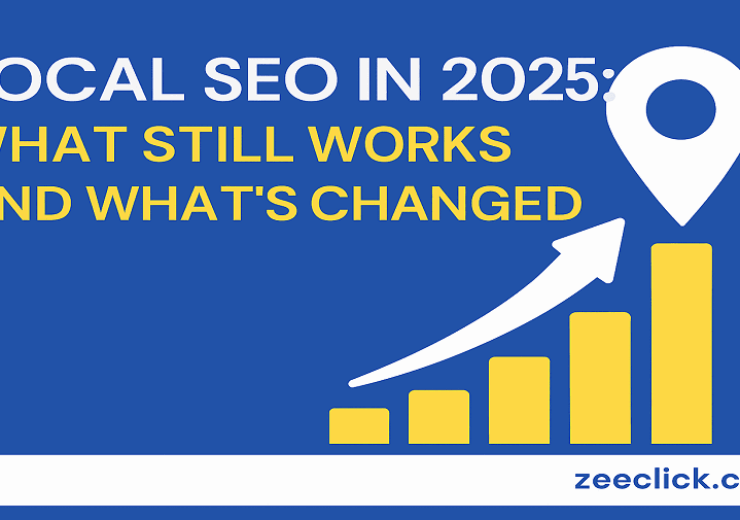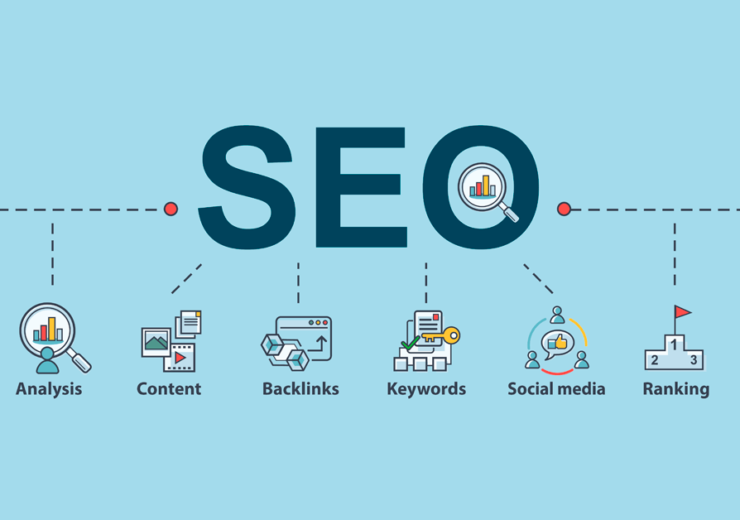Local SEO in 2025: What has Changed and What is About to Change?

Gone are the days when you only depended on global SEO strategies to attract customers online. As we’re about to bid farewell to 2025, SEO on the local level has made a lot of progress in terms of strategies and technical advancements.
Now, local SEO is an effective strategy that helps you generate consistent leads for your online business. Consider yourself as a customer for a second:
When you’re looking for a localized situation, you have a particular requirement, and the level of urgency that you’re facing is extremely high. You can’t think of a relevant business that has been showing up on your Instagram feed recently. And when you ask referral from your friends, you end up getting none.
If your business isn’t showing up in Google’s Map Pack or “near me” searches, you’re not able to capitalize on the constant flow of qualified leads. This is where you should be ready to take the initiative as soon as possible.
In this article, you’ll explore various changes in Local SEO in 2025 and the changes that are bound to happen in the coming times.
What Does Local SEO Mean?
———————————
Local SEO allows you to appear in search results when someone within your locality or region searches for the products and services you offer. For instance, when someone searches for “sushi restaurant Manhattan,” they’ll see a list of eateries and restaurants serving sushi or other relevant dishes in Manhattan.
This kind of exposure isn’t something to be considered random. As a matter of fact, a local SEO strategy will help you attract local leads with higher intent, drive foot traffic and phone calls, and build brand visibility in the communities where you operate. For a deeper dive, here’s a helpful guide on why local SEO is important for small businesses.
As a matter of fact, local SEO is all about showing up where and when it matters the most.
Did You Know?According to Google, 76% of consumers searching for “near me” on search engines visit a business within 24 hours of a search. Source: backlinko.com/local-seo-stats |
What Makes Local SEO Different From Standard SEO?
———————————
Local SEO focuses on a particular region, whereas standard SEO targets a comprehensive, geographically diverse audience.
Here’s a table that shows the clear difference between them:
Standard SEO |
Local SEO |
| Improves visibility for a national or global audience. | Does the same in a particular geographic region for local customers. |
| It focuses on comprehensive, non-location-specific keywords, like “best project management software.” | It focuses on geo-specific keywords, such as “pizza delivery near me” or “dentist in Austin.” |
| Its target audience is anyone in any part of the world. | It targets customers within a particular geographic radius of the business. |
| Important tactics include content creation, on-page and off-page optimization, technical SEO, etc. | It involves optimization of Google Business Profiles, local citations, and customer reviews. |
| Businesses using these strategies include e-commerce sites, software companies, and national brands. | Businesses that use these strategies include brick-and-mortar businesses like plumbers, dentists, restaurants, etc. |
Now, let’s jump into the new trends that have revolutionized local SEO in 2025.
Local SEO Trends That Were Gamechangers in 2025
———————————
● Voice Search Optimization:
As voice assistants like Alexa, Siri, and Google Assistant are becoming more prominent nowadays, optimizing for voice search has become extremely important. Local SEO is specifically important as voice search is often used to find regional businesses or service providers with “near me” search terms.
Local searches are known to be more conversational, due to which the usage of natural language and prioritizing long-tail keywords in your website’s content becomes essential.
You should also be clear in your content about where your business is located. Showcase and accurately describe where your location is, instead of offering vague directions and landmarks nearby. The goal is to help voice search technologies precisely.
● Mobile-First Indexing:
Google has changed its focus to mobile-first indexing in recent times, implying that your website’s mobile version will be given more priority for indexing and ranking. Local businesses should make sure that their sites are fast, mobile-friendly, and convenient to navigate.
To make that happen, your website needs a responsive design offering a consistent and user-friendly experience across different screen sizes. If your website is properly responsive, it will adapt to any screen size, which improves readability and navigation on smartphones, desktops, and tablets.
● Local Link Building:
Developing local backlinks is still an essential SEO strategy. Link building involves the process of getting links from other websites back to your own, with the aim of driving traffic to your website.
Particularly for local SEO, this involves acquiring backlinks from other relevant local businesses and organizations. Some top tactics for gaining localized backlinks involve listing your business on regional directories, hosting events to gain links from news outlets, and creating a blog that covers region-specific topics.
● User-Generated Content:
Also called UGC, this strategy includes reviews, photos, and posts from previous customers and clients. UGC improves credibility and engagement for local businesses.
Trust and credibility are extremely important for such businesses and service providers, as consumers heavily consider reviews, ratings, and testimonials while making decisions to engage with a service provider.
Implementing UGC involves consideration of various strategies. One of them includes offering clear guidelines and instructions that make it convenient for users to contribute on their behalf and submit the content.
● AI and Machine Learning:
AI tools are nowadays being used to analyze data, predict trends, and optimize local SEO tactics for particular local areas. This progressing technology is helpful in more sophisticated and personalized search experiences, and influences the way businesses optimize their local SEO presence.
Multiple localized factors like relevance, distance, and prominence influence the local presence online. AI can help businesses enhance their content by personalizing local audiences based on user intent and data from the location.
Furthermore, more importance has been given to business descriptions, especially Google Business Profiles. They are the most important aspect of local SEO.
Upcoming Local SEO Trends to Look Out For
———————————
● Hyper-Local Targeting:
As local competition heats up, businesses will put more focus on hyper-local SEO tactics. It refers to the practice of optimizing the online presence of your business for a particular geographic area, targeting specific communities or localities.
This will allow local businesses to attract customers looking for products and services nearby, with the help of hyper-localized keywords that are implemented in the content to resonate with local audiences.
● Augmented Reality and Local Search:
AR is closely related to local SEO as it focuses on location. Different augmented reality applications work on location-specific inputs. Users can gather details with Google Lens technology to learn about a business’s name, reviews, ratings, and various other things.
Apps like Yelp come with AR technology that offers users business details that are specific to the location.
● Visual Search Getting Expanded:
A search done with the help of images instead of text or voice is commonly known as visual search. There are various websites and apps that incorporate visual search, such as Pinterest Lens, Google Lens, other online retailers etc.
As visual search technology improves, optimization of images and videos will become more important for local businesses. That’s why they should focus on high-quality visuals and work on discoverability.
● Social Media Getting Integrated With SEO:
Social media platforms are getting more integrated with search engines. Businesses will be required to optimize their social media profiles and engage customers directly via such channels to enhance visibility at a local level.
In addition to that, as the emergence of AI search engines is becoming more sophisticated, the chances of search results being personalized will be higher. Businesses will be required to understand their target audience effectively and personalize their strategies accordingly.
To Summarize
As we’re anticipating the future, local SEO will keep on evolving, thanks to new technologies and trends that are changing the way businesses connect with their communities. Local businesses need to stay informed and adapt to the changes quickly to be successful in an ever-changing digital landscape.



